
Double Fine Productions, Inc. is an American first-party video game developer of Xbox Game Studios based in San Francisco, California. Founded in July 2000 by Tim Schafer shortly after his departure from LucasArts, Double Fine's first two games – Psychonauts and Brütal Legend – underperformed publishers' expectations despite critical praise. The future of the company was assured when Schafer turned to several in-house prototypes built during a two-week period known as "Amnesia Fortnight" to expand as smaller titles, all of which were licensed through publishers and met with commercial success. Schafer has since repeated these Amnesia Fortnights, using fan-voting mechanics, to help select and build smaller titles. Double Fine is also credited with driving interest in crowdfunding in video games, having been able to raise more than US$3 million for the development of Broken Age, at the time one of the largest projects funded by Kickstarter, and more than US$3 million for the development of Psychonauts 2.

Adventure Game Studio (AGS) is an open source development tool primarily used to create graphic adventure games. It is aimed at intermediate-level game designers, and combines an integrated development environment (IDE) with a scripting language based on the C programming language to process game logic.

Fallout: A Post Nuclear Role Playing Game is a 1997 role-playing video game developed and published by Interplay Productions. Set in a mid-22nd century post-apocalyptic and retro-futuristic world, decades after a nuclear war between the United States and China. Fallout's protagonist, the Vault Dweller, inhabits an underground nuclear shelter. The player must scour the surrounding wasteland for a computer chip that can fix the Vault's failed water supply system. They interact with other survivors, some of whom give them missions, and engage in turn-based combat.
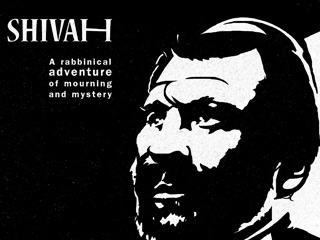
The Shivah is a point-and-click adventure game from 2006, designed and developed by Dave Gilbert with the assistance of others, including voice actors and artists. It is notable in that it features a rabbi as its protagonist and explores themes related to the Jewish faith. In 2013, the game was remastered in an updated version entitled The Shivah: Kosher Edition, which features new graphics and music, and re-recorded voice-overs.

Blackwell is a series of five graphic adventure video games from independent game developer Wadjet Eye Games, created by Dave Gilbert. The games' plots focus on Rosangela Blackwell, a spiritual medium, and her spirit guide Joey Mallone, who work to help ghosts transition to the afterlife.
Dave Gilbert is an American designer of independent adventure games using Adventure Game Studio. He began creating home-made, freeware games, and went professional in 2006, founding Wadjet Eye Games and releasing commercially The Shivah and The Blackwell Legacy.
Wadjet Eye Games is an American independent video game developer, voice casting/directing contractor/subcontractor and publisher which specialises in point-and-click adventure games. It was founded in 2006 by Dave Gilbert as a means to publish his own games, but has since expanded to publishing games by other designers as well.

The Blackwell Legacy is a graphic adventure video game developed by Wadjet Eye Games for the Microsoft Windows, Linux, macOS, iOS and Android. It is the first part of the Blackwell series and follows Rosangela Blackwell, a young freelance writer living a solitary life in New York City. She experiences headaches throughout the day and it culminates in a ghost named Joey Mallone making an appearance in her apartment. It is revealed that Rosa is a medium like her aunt and that her job is to help ghosts that are stuck in the real world move on.
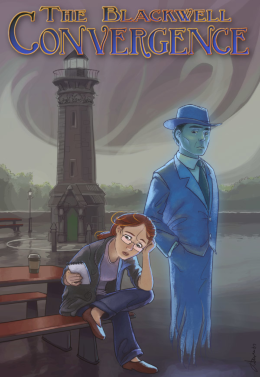
The Blackwell Convergence is a 2009 graphic adventure game developed and published by Wadjet Eye Games. It is the third entry in the Blackwell series, following The Blackwell Legacy and Blackwell Unbound.

Emerald City Confidential is a 2009 computer adventure game conceived by Dave Gilbert, developed by Wadjet Eye Games, and published through PlayFirst.
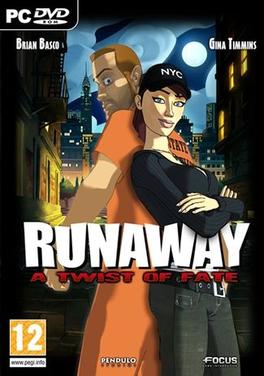
Runaway: A Twist of Fate is a 2009 graphic adventure game developed by the Spanish company Pendulo Studios and published by Focus Home Interactive. It is the third entry in the Runaway franchise. The game follows series protagonists Brian Basco and Gina Timmins as they seek to clear Brian's name of a murder. Taking control of both characters, the player explores the game world, collects items, solves puzzles and converses with non-player characters.

Gemini Rue is a cyberpunk graphic adventure game made by Joshua Nuernberger, and published by Wadjet Eye Games. The game uses a point and click interface to interact with the environment to solve puzzles and communicate with characters. A port for iOS devices was released on April 11, 2013.

Skylanders is a toys-to-life action-adventure video game franchise published by Activision. Skylanders games are played by placing a character's figure on the "Portal of Power", a device that reads its tag using NFC and "imports" them into the game as a playable character.

Puzzle Bots is a graphic adventure developed by Ivy Games and published by Wadjet Eye Games. The game uses a point and click interface to interact with the environment to solve puzzles and communicate with characters.

Simogo is a Swedish independent video game developer based in Malmö. The company was founded in 2010 and is best known for creating games for mobile devices, including Year Walk and Device 6. Its name comes from the name of its founders Simon (SIM), and Gordon (GO); the 'O' from the Swedish word "och" meaning "and".
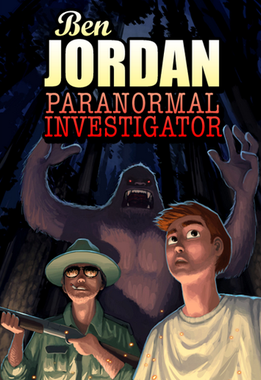
Ben Jordan: Paranormal Investigator is a freeware episodic point-and-click adventure video game for Microsoft Windows developed by Francisco Gonzalez of Grundislav Games. The game consists of eight individual episodes, or cases, with an overarching plot connecting them together. The game has won numerous Adventure Game Studio Awards, including a 2005 AGS Award for Best Gameplay.
Borderlands is an action role-playing first-person looter shooter video game franchise set in a space Western science fantasy setting, created and produced by Gearbox Software and published by 2K for multiple platforms.

Technobabylon is a cyberpunk adventure game developed by Technocrat Games and published by Wadjet Eye Games for Microsoft Windows, iOS, Linux, and macOS. Originally intended as a series of 10 free episodic games, of which three were released, it was released as a full game on 21 May 2015. The game's story covers 10 chapters and focuses on three characters who live in the future city of Newton which is governed by an autonomous AI administrator, each of whom is faced with a complex matter, but soon find themselves caught up in a conspiracy surrounding the city's AI, including murder and hidden truths about its creation.

Unavowed is an indie point-and-click adventure game developed and published by Wadjet Eye Games. It was released on August 8, 2018.
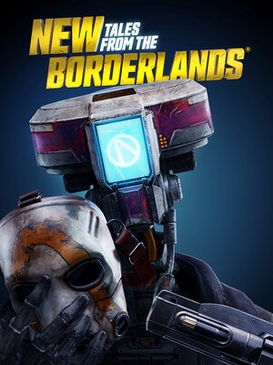
New Tales from the Borderlands is a graphic adventure video game developed by Gearbox Studio Québec and published by 2K. A spin-off of the Borderlands series and a successor to Tales from the Borderlands (2014–2015), the game was released in October 2022 for Nintendo Switch, PlayStation 4, PlayStation 5, Windows, Xbox One, and Xbox Series X and Series S.

















